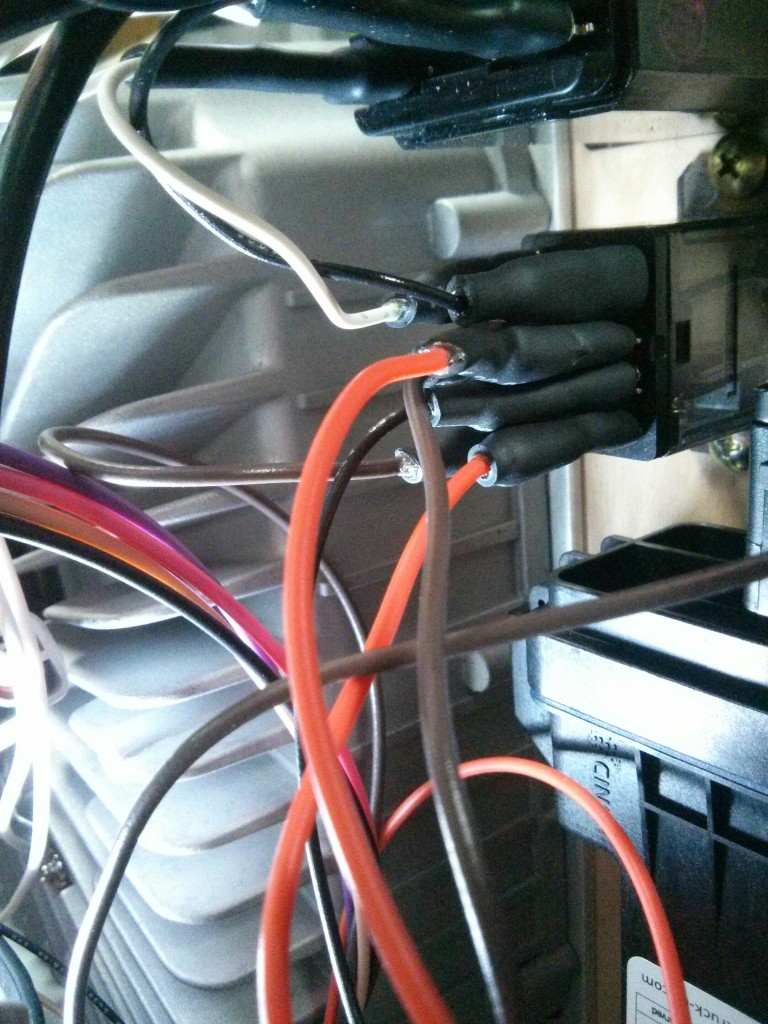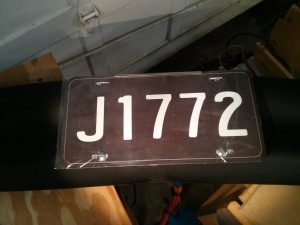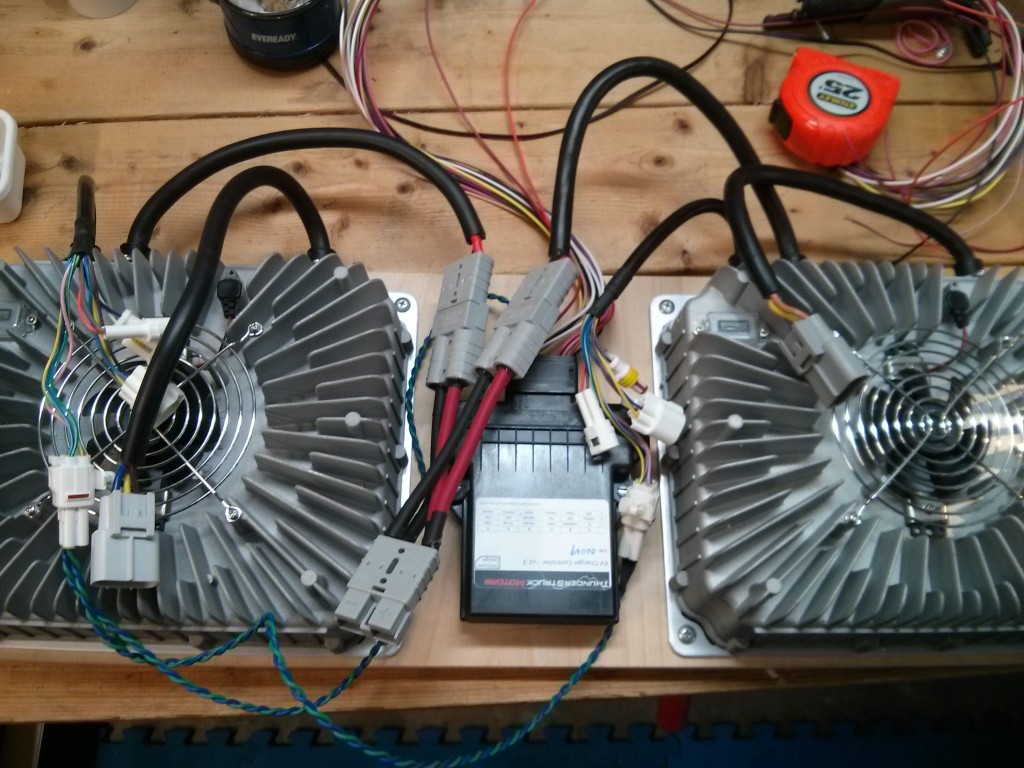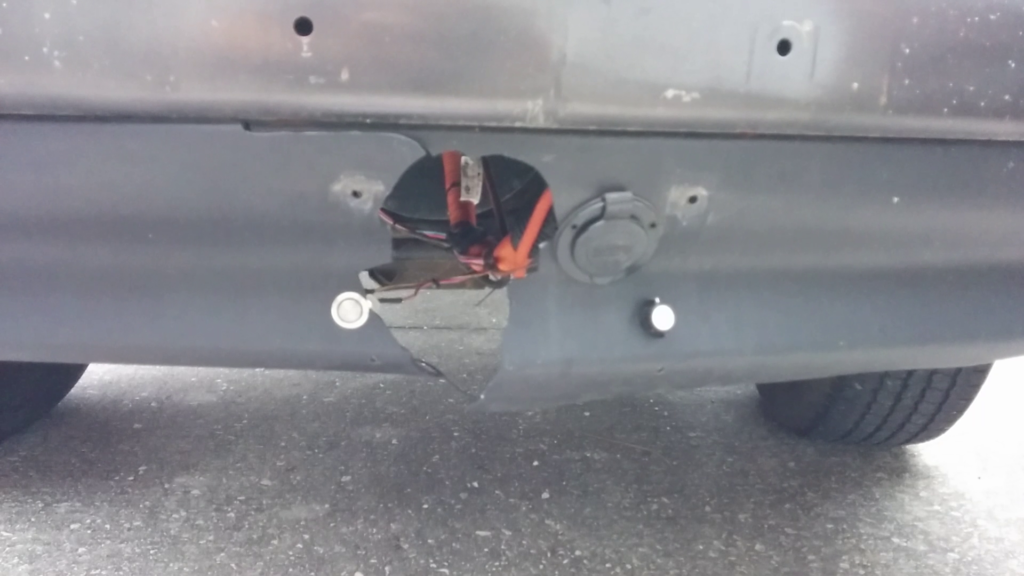My truck’s charge controller supports the J1772 protocol, and I have added a J1772 inlet I took out of the same salvage Nissan leaf that provided my LiIon battery pack.
I added the J1772 port, the “start charging” button, and a rotary switch to select between different charging profiles, as well as a 120 volt, 15 Amp RV inlet behind a flip up license plate.
When you have one charging inlet, things are simple and safe. When you have more than one, things can get complicated. In my case, I wanted to use the same charger(s) with both inlets. But I shouldn’t just wire them both up in parallel, because that would mean that the (male pins on the) RV inlet would be energized at 240 volts when charging via the J1772 plug, and it wouldn’t be good for somebody to reach in and touch them. Also, if somebody were to try and plug in the J1772 AND a 120 volt extension cable at the same time, they would be connecting a HOT (from the J1772) line directly to the Neutral line on the 120 volts (causing a short circuit). [Having the J1772 inlet energized with 120 volts is also undesirable, although slightly less dangerous, as the J1772 inlet is designed to be “finger safe”.]
To solve these problems, I used a large power relay rated at 30 amps to switch between my two possible power sources (J1772 & 120 volt RV inlet).The chargers are connected to the common power connector, the J1772 inlet is connected to the normally closed contacts, and the 120 volt RV outlet is connected to the normally open contacts (and the coil switching relay).
By default, the J1772 inlet is connected to the chargers. (For this application it is important to find a relay where BOTH the normally closed and the normally open contacts are rated at the full amperage, many “30 amp” relays are only good for 1-5 amps on the normally closed contacts and the 30 amp rating is only on the normally open contacts. Note that my chargers max out at an 18 amp draw at 240 volts, so 30 amps gives me a good safety margin. If I had a charger that could pull a full 30 amps I would have gone with a 40 or 50 amp relay.)
If anyone plugs a live extension cord into the RV inlet, it switches the relay (disconnecting the J1772 and connecting the 120 volt RV inlet). Even if the relay fails open or closed, only one of the two inlets is connected to the charger, and the other inlet is disconnected from everything.
The second 120 volt relay is used for “signaling” wires to control my EVCC. One side will disconnect my ProfileSelect wire from the rotary switch on the front air dam, automatically selecting the 120 volt 12 amp charging profile (due to infinite resistance to ground). The other side grounds the “Proximity” wire from the EVCC, telling it that a (non-J1772 compliant) power supply is attached. In this setup, the EVCC will direct the two chargers to only draw 12 amps of power, which is the maximum safe continuous current draw from a standard 15 amp 120 volt outlet. [It also supports “drive-away protection” which can prevent the truck from moving away until all of the charging cables are unplugged.]
This photo shows the 120 volt power wires, with pigtails that will lead off to the switching coils on the power and signaling relay.
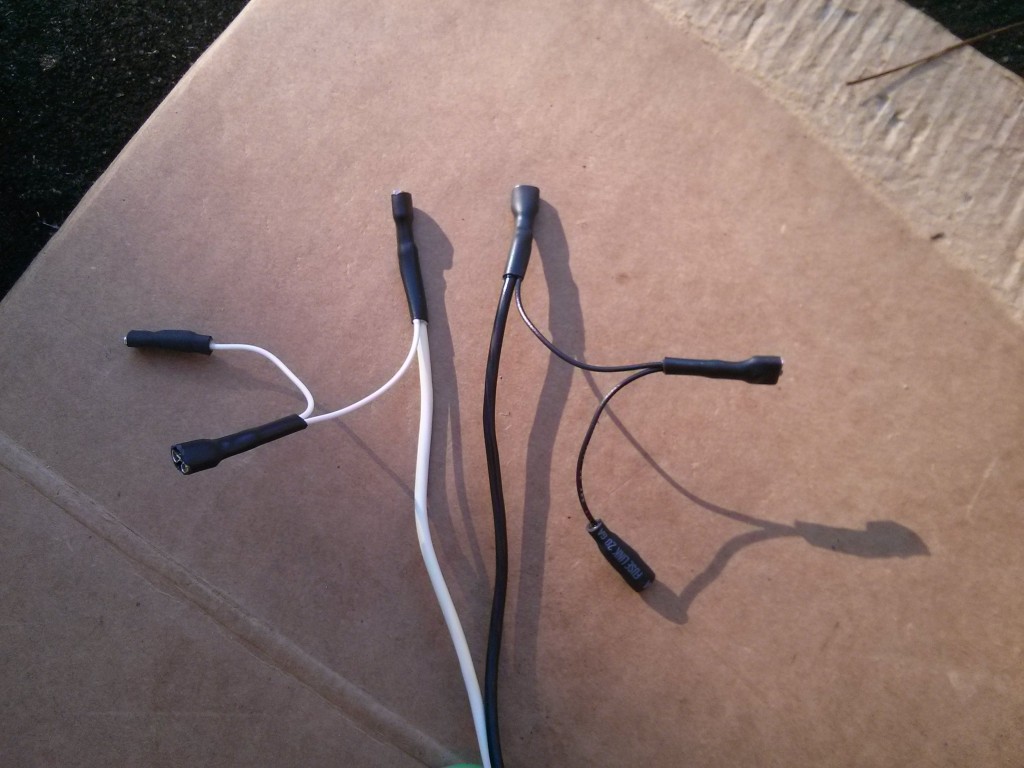
Basically, I’ve tried to make the 120 volt plug as “idiot proof” as possible. If you plug an extension cord into it and press the “start charging” button, the truck will charge at the appropriate rate regardless of how the rotary switch on the front air dam is set.

